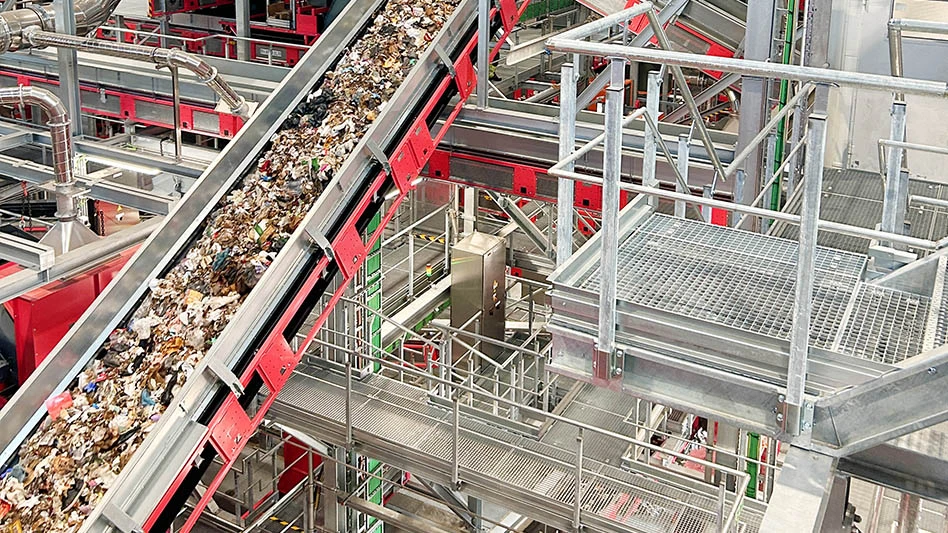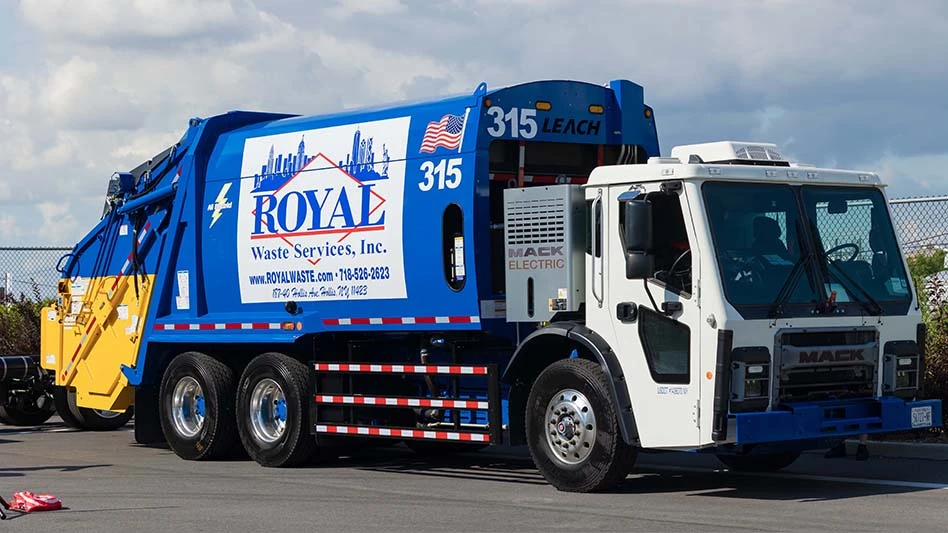|
At a Glance Quasar Energy Group Headquarters: Cleveland Anaerobic Digester Facilities: Eight in operation (Ashley, Cleveland, Columbus, Haviland, Sheffield Village, Wooster and Zanesville, Ohio; and Rutland, Mass.) and three under construction (Buffalo, and Wheatfield, N.Y.; and New Franklin, Ohio) Fueling Stations: Three fueling stations for qng—quasar’s trademarked compressed natural gas (Columbus, Zanesville and Wooster, Ohio) Principals: President Mel Kurtz (pictured above); Chief Financial Officer Steven M. Smith; Chief Operating Officer Clemens Halene Employees: 60 Feedstocks processed: food processing residuals; wastewater treatment sludge; fats, oils and greases (FOGs); dissolved air flotation; glycerin and stillage; crop residuals; biobased lubricants; personal care products; sugar water; whey; manure; manufacturing wastewater; energy crops and spent grains; and packaged organics |
Mel Kurtz has a difficult job on his hands. As the president of Cleveland-based quasar energy group, he has been a pioneer in bringing anaerobic digestion (AD) technology to the United States. While AD systems are a dime a dozen in Europe, the U.S. still has a long way to go before the technology, which can produce energy, fuel, heat and compost from organic waste, is widely adopted. Kurtz is aware of the uphill climb he has, but he has made some major headway over the last few years.
Since quasar’s founding in 2006, the company has built eight AD facilities, which the company operates. It also has three more under construction and, according to Kurtz, dozens more are in the pipeline. The company constructed its first anaerobic digester in 2009 on the campus of The Ohio State University’s (OSU’s) Ohio Agriculture Research and Development Center (OARDC) in Wooster, Ohio. The system, which takes in 20,000 tons of material, provides nearly half of the OSU extension campus’ energy needs.
“Quasar converts biologically organic residuals for energy. We reduce the volume of these waste residuals by converting them to energy, and the nutrient value of the organics is retained,” explains Kurtz. “The big mission for us is to reduce the organic volumes and create renewable energy from it. We do that by creating a biogas that we convert to biomethane that can be used interchangeably with natural gas with the highest value being our preferred product, which is vehicle fuel,” he adds.
In addition to motor vehicle fuel, quasar makes electricity and heat. “The upside of this process is that we only use 8 to 9 percent of all energy produced as a parasitic load to our operation,” says Kurtz. That means 90-plus percent of the energy produced can be exported or converted for use by the public, he adds.
In addition to the Wooster facility, quasar also has built anaerobic digesters in the Ohio cities of Ashley, Cleveland, Columbus, Haviland, Shefflield Village and Zanesville; and in Rutland, Mass.; and has three under construction in Wheatfield and Buffalo, N.Y.; and in New Franklin, Ohio. Kurtz estimates seven new digesters could be operational by the end of the year.
Through all of its developments, quasar has made an effort to employ the local labor force and use U.S-sourced technology and components. When quasar built its first digester, all of the components were sourced from Europe. Over the past six years, quasar has worked with Ohio’s existing manufacturing base to redesign and fabricate these components in Ohio, which has brought costs down significantly. Now 98 percent of the components quasar uses to build its facilities are sourced in the U.S. with more than 75 percent from Ohio.
Digester Design
Each of the systems quasar has built includes a biomass equalization tank, which is a bolted steel tank with side-entry prop mixers with a gas-tight steel roof. The tank serves as a hydraulic buffer that stores and mixes biomass for up to six days. Other system components include pressure relief valves and pipes connecting the equalization tank to the dual-purpose tank.
The dual-purpose tank has a flexible membrane roof that provides gas storage and is always pressurized. The system also includes a generator or CHP unit where biogas is used to generate electricity, a flare to discharge excess gas, gas upgrade units with gas drying and compression systems and a dewatering press, among other components. Each plant building contains monitoring equipment and technology that tracks each component of the system and is visible to operators in real time.
Quasar has partnered with Air Products, Allentown, Pa., to develop a proprietary gas cleaning technology that generates quasar natural gas, or qng™, quasar’s brand of compressed natural gas (CNG), for use as motor vehicle fuel. According to quasar, the fuel burns 60 percent cleaner than gasoline or diesel and costs less. Quasar has 29 vehicles that run on qng with operational fueling stations in Columbus, Zanesville and Wooster.
 As one of the first AD companies to build multiple facilities in the United States, Kurtz says, “Quasar is not just building waste-to-energy plants, it is building an industry.”
As one of the first AD companies to build multiple facilities in the United States, Kurtz says, “Quasar is not just building waste-to-energy plants, it is building an industry.”
Kurtz says the challenge to building more AD facilities in the country is that many people in the U.S. don’t realize there are other outlets for waste materials than incineration, chemical treatment and landfills. “A lot of people don’t know these options exist,” Kurtz says of AD and other waste conversion technologies.
As one of the first U.S. developers of AD technology, quasar has the challenge of not only spreading awareness about the technology but also of showing people it works and that it is economical. “Green doesn’t work unless it’s less expensive,” Kurtz explains. And he says that AD is a cost-effective option for many organic waste streams.
Kurtz understands the transition of adopting new technologies does not happen overnight. That is why his motto is not “Do the right thing,” but it is to do what is right for the environment one step at a time. “It is easier to do the next right thing than it is to do everything right,” he explains. AD is a technology used largely for agricultural waste applications, but there are many more organic waste streams that could benefit from using the technology.
“When we consider the potential impact of anaerobic digesters, it is hard not to recognize that we are talking about much more than encouraging sustainable agricultural operations,” Kurtz says. “We are talking about impacting America’s food processing companies, wastewater treatment plants, manufacturing plants, public and private vehicle fleets, electric and natural gas utilities and consumers who benefit from all of these activities.” He adds, “Anaerobic digestion is the starting point for sustainable solutions with economic benefits that will affect every American.”
 System Upgrade
System Upgrade
Quasar’s Zanesville digester recently underwent an expansion that includes an additional tank and the addition of a depackaging operation. The Integrated Anaerobic Digestion System (iADS) is patent-pending technology developed at OSU that integrates quasar’s liquid AD with solid state AD, resulting in a technology that can treat and recover energy from feedstocks ranging from 0.5 percent to 85 percent total solids content, the company says. The expansion has increased Zanesville’s capacity to 3.325 million gallons.
In a video available at www.REWmag.com, Zanesville Plant Manager Chase Smith details the expansion, saying, “We added a 2.5-million-gallon storage tank that serves as a second digester for us. It also stores our liquid fertilizer before land application, and we have a dry digester which takes in up to 85 percent solids.”
Smith describes the difference between the two digesters. “The original plant takes up to about 12 percent solids. The dry digester is more of a wood waste and soil amendment,” he says. “We inoculate our liquid fertilizer in with the dry digest material and then store it for 28 days. It serves the same purpose as the main digester, just with different solid content, and we can still pull methane gas off of it.”
The depackaging capabilities allow for packaged organics to be processed for use in anaerobic digestion. The facility can accept expired, damaged, recalled or off-spec food products. The goods are placed into a machine that separates organic materials from packaging, such as wax-coated cardboard, glass bottles, aluminum cans, plastic bottles, wrappers and containers.
“We separate the organics from the residuals and we bale and recycle all the residuals that we can,” says Smith. “We take all the organic material and process it in our main plant, which would be the liquid side, and we use it for dilution or any other process we may need liquid for.”
The 120-acre Zanesville site also features a qng fueling station and may soon include a greenhouse that runs off of energy and compost that is produced on site.
Innovation
Creating demand for CNG and building the infrastructure to increase availability of CNG vehicles and fueling stations is vital to further embedding quasar’s technology into Ohio’s clean energy economy as well as in surrounding states, according to Kurtz.
“Part of building the industry based on cleaner burning domestic vehicle fuel is expanding the availability of this technology to converted vehicles that already exist,” says Kurtz. “Then businesses or individuals considering converting their vehicles can feel confident that they’ll have a place to find fuel when they need it.
“Innovation always precedes regulation and legislation,” Kurtz adds. “We have to have a direct line of communication between both legislators and regulators to keep them focused on the opportunities for improving the environment with new technology.”
As AD technology advances, Kurtz predicts the cost of processing will decrease as opposed to chemical processing, landfilling and incineration costs, which he says continue to go up.
While AD is an emerging technology in the U.S., by contrast, Europe has an estimated 8,000 anaerobic digesters in operation. Kurtz says that is because the continent has less land, higher population concentration, more energy imports and less landfill airspace than the United States. “They had to do it. We get to do it,” he says of AD. “We get to do it ahead of where it’s a necessity.”
 Kurtz says he believes the U.S. is in the preferred position in how it is adopting AD and CNG. “It is always better to do something because you want to as opposed to because you have to,” he concludes.
Kurtz says he believes the U.S. is in the preferred position in how it is adopting AD and CNG. “It is always better to do something because you want to as opposed to because you have to,” he concludes.
The author is managing editor of Renewable Energy from Waste magazine and can be reached at ksmith@gie.net.
Learn More: To find out more about quasar’s expansion in Zanesville, Ohio, watch the exclusive video:
Latest from Waste Today
- US Senate backs reduced cuts to EPA
- ELV Select Equipment, Reworld aid NYPD in secure firearm disposal
- Waste Connections announces Q2 results
- Returnity and Cosmoprof to address reusable bag waste
- SWANA releases report on aging WTE facilities
- New economic assessment reveals cost benefits of California’s SB 54
- Premier Truck Sales & Rental opens new facility
- TeknTrash Robotics, Sharp Group partner on humanoid robot pilot






